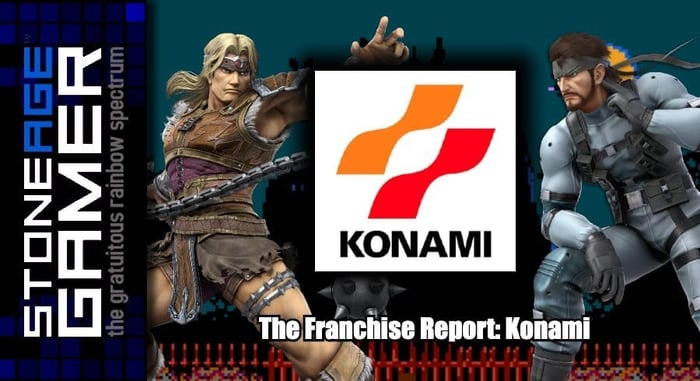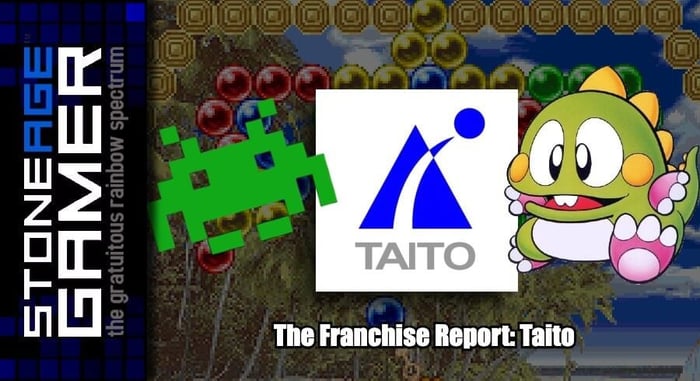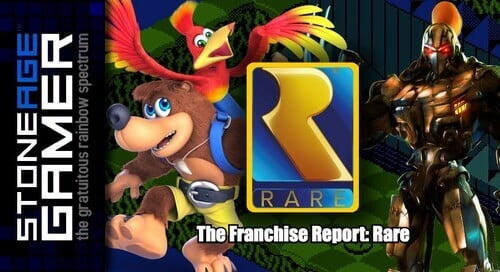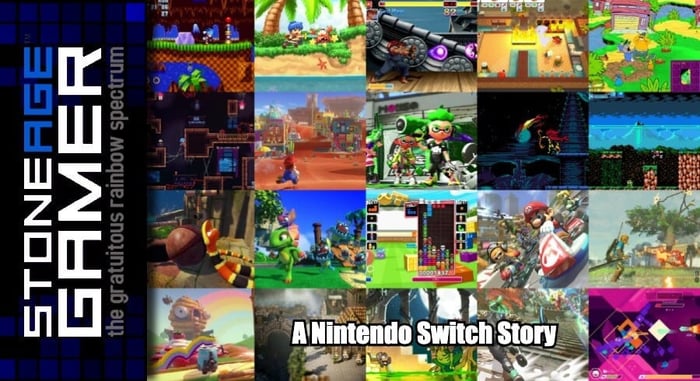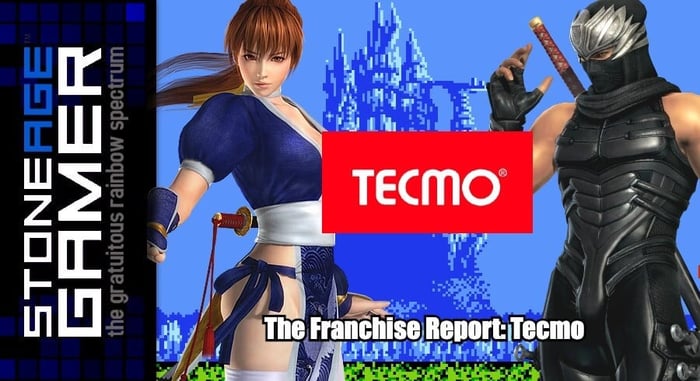
The Franchise Report: Tecmo
Welcome to The Franchise Report, where we take a look at a 3rd party game developer and see how their biggest franchises are doing these days. We continue this week with the Tecmo side of ol’ Koei-Tecmo. Let’s see what they’ve been up to.
The Ninja Team
Koei-Tecmo has certainly found its niche since their merger, what with their litany of Warriors releases over the years, but today we’re going to specifically take a look at the Tecmo side of things. Tecmo used to be an absolute powerhouse publisher back in the NES days. Things slowed down considerably for them once gaming went 16-bit, but they found their footing again a generation later with a beloved fighting game, a revival of their biggest brand, and um… beach volleyball.
Anyway, let’s see how their stuff is doing.
Dead or Alive
If memory serves me right, the original Dead or Alive didn’t make a huge impact when it was originally released. It hit arcades in 1996, and was ported to Saturn (in Japan) and PlayStation shortly after that. The only things I ever heard anyone say about it were that it had Ryu Hayabusa from Ninja Gaiden was in it, and it had the most ridiculous breast physics anyone had ever seen.
The game’s claim to fame was scantily clad women with gravity defying boobs, which isn’t exactly a franchise-maker. However, that all changed when Dead or Alive 2 hit Sega Dreamcast. After that, DOA became a pretty well-liked fighting franchise (with plenty of scantily clad women, of course) that was at the height of its popularity on par with the likes of Tekken.
Things have slowed down though, with its most recent sequels failing to truly deliver a bonafide hit for Tecmo. 2019’s Dead or Alive 6 was the last entry in the main series, which received average reviews pretty much across the board. The same can be said for its absurd beach volleyball spinoff series DOA: Xtreme.
Rating: Healthy
Things have been quiet on the Dead or Alive front for a little while, but it’s nothing to be concerned about. There does seem to be a new Dead or Alive game in development, but there aren’t many solid details. So while it may be a while before we see an official Dead or Alive 7, the brand seems to be doing just fine.
Deception
There really wasn’t much like Deception when it released. At the time, we were just starting to see these new kinds of games like Metal Gear Solid, Tenchu, and Resident Evil that placed a focus on stealth and survival. Tecmo’s Deception hit the PlayStation in 1996, and while it wasn’t a mammoth success, it left a mark.
Sequels were released at a steady pace for a number of years, even though their branding made them a bit hard to follow. Deception II was called Kagero, which was followed up by Trapt, which forewent the Deception title altogether in the US and went by Kagero II: Dark Illusion in Japan. The last entry in the series was Deception IV: Blood Ties, which was released in 2014. It also saw an expansion in Japan in 2015, but that’s pretty much it.
Rating: Not too good
This series is by no means officially dead, but it’s been quiet just long enough to cause concern. There haven’t been any official announcements of a Deception V yet, but six years isn’t exactly a franchise death sentence either, especially for one like this.
Fatal Frame
Tecmo’s survival horror photography series has been on quite a ride since its 2001 debut. After the first three games, Nintendo actually got involved and published exclusive releases for the Wii and 3DS. The latest entry in the franchise, Fatal Frame: Maiden of Black Water, was a Wii U exclusive that never even saw a physical release in the US, so you can imagine how well that went. The good news is, that game was remastered and re-released on pretty much every major platform just this year.
Rating: Healthy
With a fresh re-release of an underplayed and fairly well-liked game, Fatal Frame seems like it’s not going anywhere anytime soon. Granted that game was originally released in 2015 so it has been a while since there was a proper new entry in the series, but all in all, things are looking good.
Monster Rancher
The original Monster Rancher’s PlayStation release had a unique claim to fame in that if you put a regular music CD into your system, the game would generate unique monsters based on them. It was apparently a pretty fun game on its own too.
Then Pokemon happened, and Monster Rancher joined the ranks of countless other franchises trying to capitalize on that insanity.
While it never approached Pokemon levels of success, Monster Rancher managed to build into a pretty successful brand for Tecmo, spawning sequels, animated series, and more.
Rating: Healthy
There hasn’t been a proper new release in the series since 2011’s My Monster Rancher for iOS and Android, but previous games in the series have been ported to mobile devices as recently as a couple of months ago, and earlier this year it was announced that the first two games in the series were being remade for modern consoles.
Rygar
Oh, poor Rygar. Rygar was a moderate success for Tecmo when it was released in arcades in 1986, and really blasted off with an amazing reimagining for the NES, but as successful as that game was it never saw a proper follow up.
Then in 2002, Tecmo released the excellent Rygar: The Legendary Adventure for PlayStation 2 and it seemed like the brand would finally find the life it deserved. Or at least it would have if Capcom hadn’t released the genre-defining Devil May Cry a year prior. For as great as Rygar for PS2 was, it was no Devil May Cry, and by the time God of War hit a few years later, Rygar was buried.
Tecmo did try once again with the ill-conceived Rygar: The Battle of Argus for Wii, but the less said about that white haired, tribal tattoo sporting anime-looking dude with motion controls slathered all over the place the better. It was a miserable experience, and seems to have put the nail in Rygar’s coffin for good.
Rating: Poor
After The Battle of Argus, it seems like Tecmo has no idea what to do with the Rygar brand anymore, which is a shame because the NES game and its PS2 reboot are genuinely great. Maybe they’ll try again in a few years, but the outlook here isn’t very good.
Tecmo Bowl
This is the game that defined NES sports games, and is still a beloved classic today. Tecmo had plenty of other sports games over the years, but none of them lived up to the classic stature of Tecmo Bowl.
Rating: Okay
There were plenty of Tecmo Bowl follow ups over the years, and a couple of genuine shots at a proper revival, but those original NES releases have an undeniable nostalgic hold on the series which Tecmo has been more than happy to exploit whenever they can. The last official original release was Tecmo Bowl Throwback for PS3 and Xbox 360, but the original game is currently part of Nintendo Switch Online service, and outside of that, fans have been keeping the game alive with online updates for years. Tecmo may not do a ton with it, but this brand doesn’t seem to be going anywhere.
Ninja Gaiden
Tecmo’s flagship franchise has been way too quiet for way too long. While the game started life as an arcade beat 'em up, it was its NES re-imagining that made Ninja Gaiden just as big as the likes of Castlevania and Mega Man. The Ninja Gaiden NES trilogy stands to this day as one of the most revered series on the platform, but once games went 16-bit, things went weirdly quiet.
The Ninja Gaiden Trilogy was released on SNES in 1995, but it was a pretty shoddy port job, and then the franchise skipped the 32-bit generation altogether unless you count series protagonist Ryu Hayabusa’s appearance in Dead or Alive.
It wasn’t until 2004 when Tecmo gave the franchise a much deserved, if a bit uneven shot in the arm. First they released a weird little mobile phone game called Ninja Gaiden X which was supposed to be a sort of prequel to the original NES trilogy, but that wasn’t very good and almost nobody played it. On the other side of the spectrum though, we had Ninja Gaiden for Xbox, which was a massive success. That game spawned a whole new franchise for Tecmo to run with, but unfortunately the subsequent sequels lost their way a bit, leaving Ryu’s future uncertain.
Rating: Okay, Maybe?
Ninja Gaiden is too big a brand for Tecmo to just give up on, but it certainly could be healthier. The last original release was a spinoff called Yaiba: Ninja Gaiden Z back in 2014, which was largely reviled by fans and critics alike. However, just this year Tecmo released the Ninja Gaiden Master Collection on all major platforms, bringing the first three 3D adventures of Ryu Hayabusa to a new audience.
But the original NES trilogy that made the brand a success in the first place has been MIA since that crummy mobile game in 2004, which is a shame because games like The Messenger and Cyber Shadow have done wonders in the realm of 8-bit Ninja action, and a proper modern take on the classic Ninja Gaiden formula has a ton of potential.
And that wraps up another Franchise report. All in all Tecmo seems to be doing pretty well for itself, and the majority of its biggest brands are doing fairly well. Some of their legacy content like Bomb Jack and Solomon's Key could stand to see some sort of revitalization effort, but with everything else they have going on, that seems unlikely.
We’ll be back next week with more!


